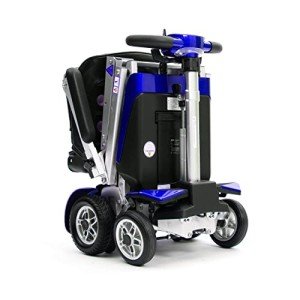A Comprehensive Guide to Buying a Mobility Scooter
Mobility scooters have become an important tool for numerous people aiming to improve their independence and mobility. With a large array of designs and functions readily available, picking the best mobility scooter can be intimidating. This post supplies an informative guide to help consumers navigate their alternatives, evaluate their needs, and make an informed purchase.
Comprehending Mobility Scooters
Mobility scooters are electric lorries created for individuals who experience mobility challenges. They are especially beneficial for elders, those with impairments, or individuals recuperating from injuries. Mobility scooters can differ widely in terms of design, functions, and rates.
Types of Mobility Scooters
Before embarking on a purchase, it's vital to comprehend the different types of mobility scooters readily available:
Three-Wheel Scooters:
- Generally more maneuverable in tight areas
- Lightweight and portable
- Suitable for indoor use
Four-Wheel Scooters:
- Offer higher stability and balance
- Ideal for outside use over various terrains
- Generally have a longer battery life
Foldable/Portable Scooters:
- Designed to be easily transported and kept
- Can frequently suit the trunk of a cars and truck
- Perfect for those who travel regularly
Durable Scooters:
- Built to accommodate bigger people
- Often included more robust features for outside usage
- Generally geared up with bigger batteries for extended range
Elements to Consider When Buying a Mobility Scooter
1. Weight Capacity
Choose a mobility scooter that can support the user's weight. A lot of scooters have a weight limitation ranging from 250 to 500 pounds. It is essential to make sure that the scooter can accommodate the user conveniently.
2. Variety and Battery Life
The variety is how far the mobility scooter can take a trip on a single charge. Typical varieties differ between 10 to 30 miles. Consider best mobility scooter uk and pick a scooter with an appropriate range.
3. Scooter Dimensions
Consider the size of the scooter, including its weight and measurements. A more compact scooter may be perfect for narrow corridors and tight spaces, while larger designs provide extra stability and convenience.
4. Terrain Capability
Assess where the scooter will mostly be used. If the user plans to travel primarily on pavement, a lightweight design might be enough. Nevertheless, if the user needs to traverse gravel or unequal surface areas, consider a four-wheel scooter developed for off-road usage.
Leading Features to Look For
Convenience
- Adjustable Seats: Look for scooters with cushioned and height-adjustable seats to guarantee convenience throughout travel.
- Armrests: These enhance security and support while navigating.
Safety and Visibility
- Headlights and Taillights: Essential for nighttime use.
- Turn Signals and Reflectors: Improve visibility and safety while on the road.
User-Friendly Controls
- Joystick or Drive Controls: These should be user-friendly and simple to control.
- Easy-to-Read Displays: A control board that shows battery life, speed, and distance can enhance the user experience.
Extra Features
- Storage Compartments: These use included convenience for bring individual products while on the go.
- Weather condition Protection: Consider designs with rain covers or windshields if used in variable weather condition conditions.
Cost Considerations
When budgeting for a mobility scooter, rates can range anywhere from ₤ 500 to over ₤ 5,000 depending on the model, features, and brand name. Additional expenses might include:
- Extended Warranty: Protects versus defects and can save cash in the long run.
- Devices: Optional features, such as upgraded seats, lights, or storage solutions.
| Function | Cost Range |
|---|---|
| Basic Models | ₤ 500 - ₤ 1,500 |
| Mid-Range Models | ₤ 1,500 - ₤ 3,000 |
| High-End Models | ₤ 3,000 - ₤ 5,000 |
Funding Options
Many retailers provide financing strategies, and some regional government efforts might offer grants or assistance for those in need. Examine potential financial support with community resources or mobility service organizations.
Frequently asked questions about Buying a Mobility Scooter
What is the difference in between a mobility scooter and a wheelchair?
Mobility scooters are motorized and enable users to navigate individually, while wheelchairs may require physical help or manual operation.
How do I maintain a mobility scooter?
Routine maintenance includes checking battery life, cleaning the scooter, and checking tires and brakes. Always describe the user handbook for specific standards.
Can mobility scooters be used indoors?
Yes, lots of models are developed for both indoor and outdoor use. Nevertheless, three-wheel scooters tend to be better fit for indoor navigation due to their tighter turning radius.
Are mobility scooters covered by insurance coverage?
Some insurance coverage plans cover a part of the expenses for mobility scooters if they are considered medically required. Contact your service provider for specific details.
How quick can a mobility scooter go?
Many mobility scooters have an optimal speed ranging from 4 to 8 miles per hour. However, the suitable rate might vary depending upon regional regulations.
Getting a mobility scooter can significantly enhance one's independence and quality of life. By comprehending the types, functions, and costs connected with mobility scooters, potential purchasers can make well-informed choices that suit their needs and preferences. Customization and comprehensive research study are key to guaranteeing complete satisfaction with this essential investment.

